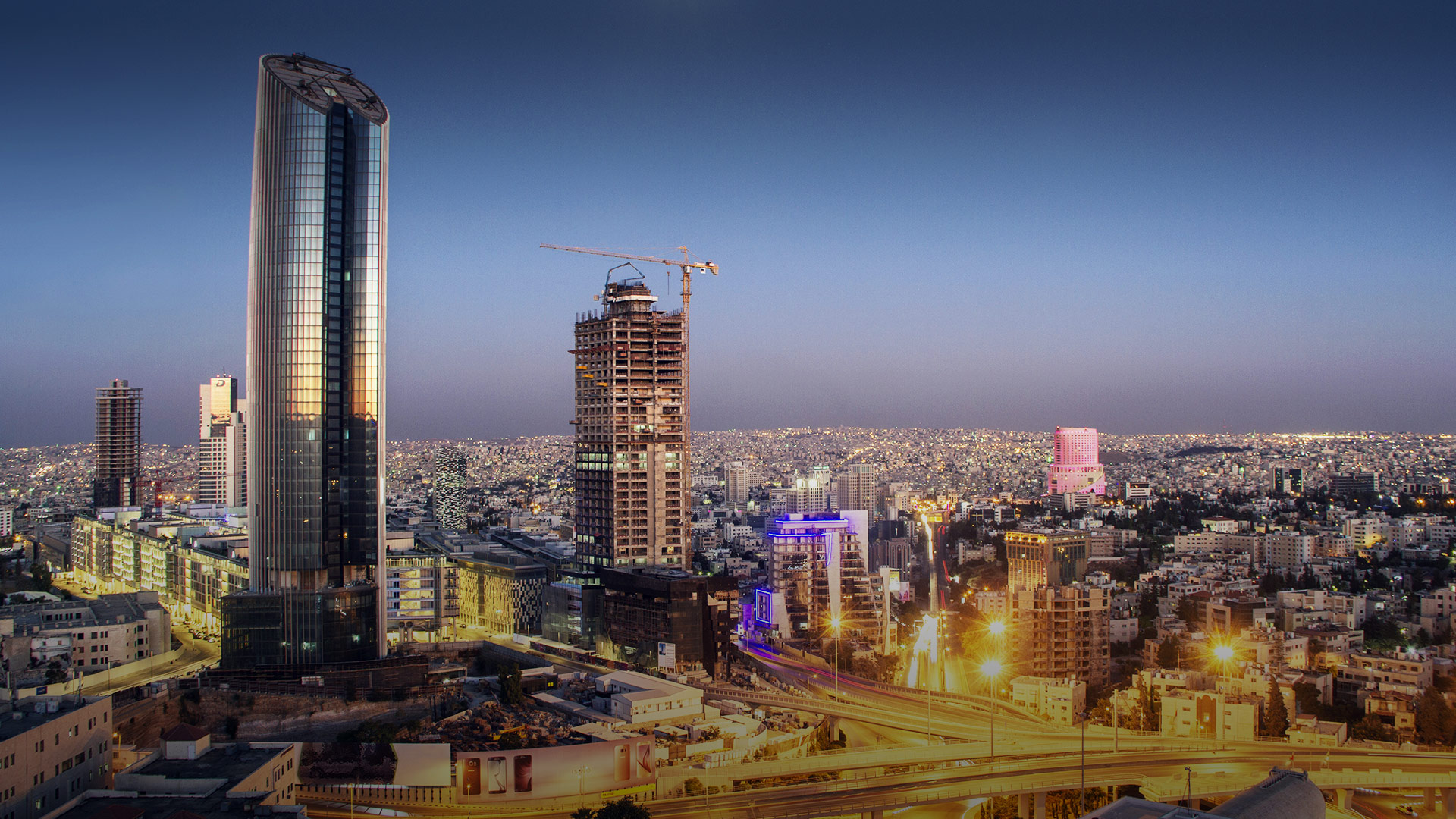The Old Meets the New
In the commercial heart of the city, ultra-modern buildings, hotels, smart restaurants, art galleries and boutiques rub shoulders comfortably with traditional coffee shops and tiny artisans’ workshops. Everywhere there is evidence of the city’s much older past. Due to the city’s modern-day prosperity and temperate climate, almost half of Jordan’s population is concentrated in the Amman area. The residential suburbs consist of mainly tree-lined streets and avenues flanked by elegant, almost uniformly white houses in accordance with a municipal law, which states that all buildings must be faced with local stone.
The Hub of Jordan
Amman is the capital and most populous city of Jordan, and the country’s economic, political and cultural center. Situated in north-central Jordan, Amman is the administrative center of the Amman Governorate. Today, Amman is considered to be among the most liberal and westernized Arab cities. It is a major tourist destination in the region, particularly among Arab and European tourists.
The earliest evidence of settlement in the area is a Neolithic site known as ‘Ain Ghazal’. Its successor was known as “Rabbath Ammon”, which was the capital of the Ammonites, then as “Philadelphia”, and finally as Amman. It was initially built on seven hills but now spans over 19 hills combining 27 districts. Areas of Amman have either gained their names from the hills (Jabal) or valleys (Wadi) they lie on, such as Jabal Luweibdeh and Wadi Abdoun. East Amman is predominantly filled with historic sites that frequently host cultural activities, while West Amman is more modern and serves as the economic center of the city.
Medical Tourism
Amman, and Jordan in general, is the Middle East’s hub for medical tourism. Jordan receives the most medical tourists in the region and the fifth highest in the world. Amman receives 250,000 foreign patients a year and over $1 billion annually.
Landmarks:
- Citadel
- Roman Amphitheater
- Downtown
- Royal Automobile Museum
- King Abdullah Mosque
- Jordan Museum
- Jordan Archaeological Museum
- Jordan National Gallery of Fine Arts
Discover Amman
See the highlights of ancient and modern Amman on this special tour. Traveling by private, air-conditioned vehicle with an informative private driver. See top Amman attractions including the stunning King Abdullah Mosque, visit the ruins and Archaeological Museum of the hilltop Citadel, the Roman Amphitheater with its Museum of Popular Traditions, and the Rainbow Street in Jabal Amman Quarter. Visit Jordan Museum which explores Jordan’s history and the Royal Automobile Museum to marble on an impressive car collection. Discover the many different faces of Jordan’s capital, from its dusty classical ruins to vibrant markets and the upscale Abdali Boulevard and other malls of the modern city to admire the chic houses and malls of the “Abdoun” and “Swefieh” areas.
As you travel, hear about the history of this fascinating city, whose past stretches back to 3500 B.C. or before. Hear about the city’s days under the Roman Empire, and how it was occupied by the Nabataeans and Byzantines. View one of Amman’s star attractions, the King Abdullah Mosque, famous for its blue mosaic dome, and the nearby Coptic Church. Next, make your way to Amman Citadel, the hilltop collection of antiquities that looms over the city with a private local guide.
Explore the timeworn Roman, Byzantine and early Islamic relics, and pay a visit to the Citadel’s Archaeological Museum to inspect its collections of ancient artifacts discovered at sites from across Jordan. Then, continue to the Roman Amphitheater, a magnificent hillside structure believed to have been built in the 2nd century. Admire the symmetry and scale of the theater and marvel at how it was built as part of the Roman city of Philadelphia, and could accommodate up to 6,000 spectators. Continue to visit the Museum of Popular Traditions to see the exhibition of traditional dress and jewelry.
Pass the “Raghadan Palace”, the burial place of the late King Hussein, and ride around the downtown area for free time at its vibrant markets, traditional mosques, and churches. Then, stroll along Rainbow Street, Amman’s colorful arts and shopping hot spot, passing the Jordan River Foundation and residence of King Talal. Delve into the upscale neighborhoods of “Abdoun” and “Swefieh”, where luxury shopping malls and swanky private villas line the streets.
Proceed to visit the vintage, Hashemite Royalty private collection cars at the Royal Automobile Museum, located in the leafy gardens of King Hussein Park, home of the Late King Hussein beautiful grand elegant Mosque. The museum showcases a rare collection of Jordan’s vehicles ranging from King Hussein bin Ali’s cars that came to Amman in 1916 to modern sports cars.
